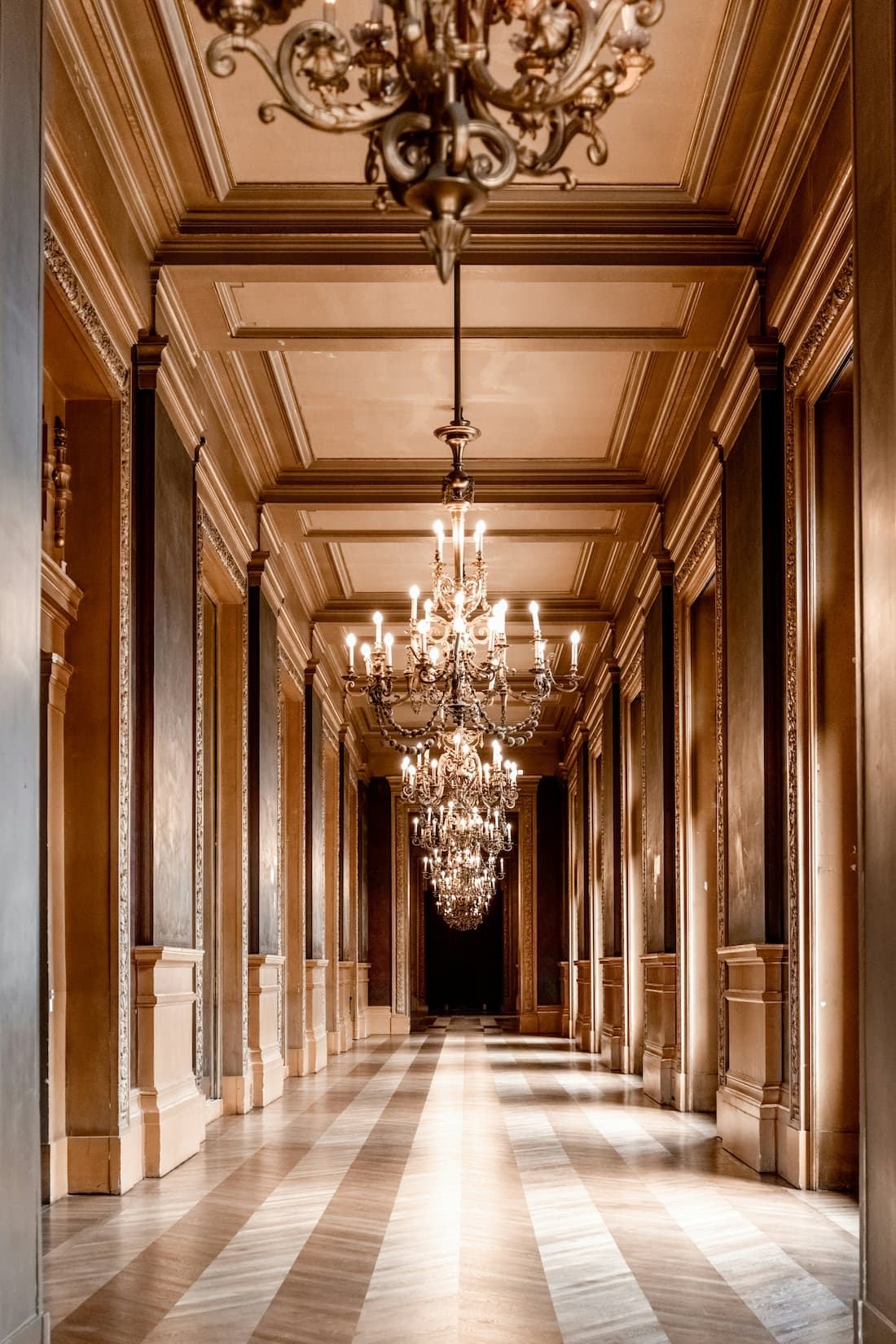There’s a moment of recognition that occurs when you encounter truly exceptional craftsmanship—a subtle shift in posture, a deeper breath, an almost imperceptible relaxation. Whether it’s the substantial weight of a perfectly balanced door handle or the silk-smooth operation of quality drawer slides, our bodies register quality before our minds process it. This instinctive response reveals something profound about human psychology: we don’t just observe luxury, we feel it at a cellular level.
Understanding why quality furnishings affect our emotional wellbeing so dramatically isn’t mere academic curiosity—it’s the key to creating homes that genuinely nurture and restore us. In an increasingly demanding world, our living spaces must function as more than mere shelter; they need to serve as psychological sanctuaries that support our mental health and emotional equilibrium.
The Neuroscience of Touch and Quality
Our sense of touch operates faster than conscious thought, sending signals directly to the limbic system—the brain’s emotional processing center—before engaging higher cognitive functions. This explains why the first contact with quality furnishings creates such immediate impact. Your nervous system recognizes and responds to superior materials and craftsmanship within milliseconds.
Research in haptic psychology demonstrates that texture, weight, and temperature significantly influence our emotional states. Smooth, well-finished surfaces promote feelings of calm and control, while rough or inconsistent textures can create subtle stress responses. The substantial weight of quality materials signals stability and permanence, reducing anxiety in ways we rarely consciously recognize.
Consider the difference between opening a flimsy cabinet door that flexes and rattles versus one that moves with precision and closes with a satisfying, muffled click. The former creates micro-stressors that accumulate throughout the day, while the latter provides tiny moments of satisfaction that contribute to overall wellbeing.
Maslow’s Hierarchy in Material Form
Abraham Maslow’s hierarchy of needs provides a framework for understanding luxury’s psychological impact. While basic furniture addresses fundamental shelter needs, quality furnishings operate at higher levels—addressing needs for security, belonging, esteem, and self-actualization.
Security Through Permanence Quality furnishings communicate permanence and stability in ways that extend far beyond their functional lifespan. A solid timber dining table that could last generations provides psychological security that particleboard alternatives cannot match, regardless of their immediate functionality. This sense of permanence helps create the psychological safety necessary for relaxation and restoration.
Belonging and Identity Expression Our possessions serve as external representations of our internal identity. Quality pieces allow for more nuanced self-expression than mass-produced alternatives. The person who chooses hand-forged hardware over standard options is making a statement about values, taste, and attention to detail that resonates both with themselves and their guests.
Esteem Through Curation Living with beautiful, well-made objects provides daily affirmation of good judgment and personal worth. This isn’t superficial materialism—it’s the deep satisfaction that comes from making thoughtful choices that enhance daily life. Each interaction with quality pieces reinforces positive self-perception.
The Stress Response to Poor Quality
Just as quality creates positive emotional responses, substandard furnishings generate subtle but persistent stress. Doors that stick, drawers that bind, or surfaces that feel cheap to the touch create micro-frustrations that accumulate into genuine stress over time.
These stress responses aren’t psychological weakness—they’re evolutionary adaptations that helped our ancestors assess the quality and safety of their environment. In modern contexts, these same mechanisms evaluate the reliability and quality of our surroundings, influencing our comfort levels and stress responses accordingly.
The Cumulative Effect Individual instances of poor quality might seem insignificant, but their cumulative impact can be substantial. A drawer that requires extra force to open, a faucet that drips, or a chair that wobbles—each represents a small failure in our environment that requires mental energy to accommodate. Quality eliminates these daily irritations, freeing mental resources for more important concerns.
Sensory Integration and Emotional Response
Luxury furnishings engage multiple senses simultaneously, creating rich, satisfying experiences that cheap alternatives cannot replicate. This multi-sensory engagement triggers more complex neural responses, leading to stronger emotional connections with our spaces.
Visual Harmony Quality pieces typically exhibit superior proportions, finishes, and details that create visual satisfaction at both conscious and subconscious levels. The golden ratio, balanced proportions, and harmonious color relationships all contribute to spaces that feel inherently “right” without viewers necessarily understanding why.
Acoustic Qualities The sound signature of quality furnishings differs dramatically from cheaper alternatives. A solid timber door closes with a deep, muffled thunk rather than a hollow rattle. Quality hardware operates silently rather than creating squeaks and rattles. These acoustic differences contribute to the sense of serenity that characterizes luxury environments.
Olfactory Connections Natural materials possess subtle scents that synthetic alternatives cannot replicate. The faint aroma of quality leather, the fresh scent of solid timber, or the clean smell of natural stone all contribute to positive emotional associations. These scents trigger powerful memory responses and create deeper connections to our spaces.
The Ritual of Daily Interaction
Living with quality furnishings transforms mundane daily activities into moments of appreciation. Opening a perfectly balanced drawer, turning a substantial door handle, or sitting in a chair that perfectly supports your body—these micro-experiences accumulate into profound satisfaction with one’s environment.
This elevation of ordinary activities into pleasurable experiences represents one of luxury’s greatest psychological benefits. Rather than rushing through daily routines, quality furnishings encourage mindful interaction with our environment, promoting present-moment awareness and reducing stress.
Morning Rituals Enhanced Starting the day by interacting with beautiful, well-functioning objects sets a positive emotional tone that can influence entire days. The satisfying weight of quality cutlery during breakfast, the smooth operation of a well-made coffee machine, or the pleasure of washing hands at a beautifully designed basin all contribute to morning optimism.
Evening Restoration Quality furnishings play crucial roles in evening wind-down routines. Comfortable seating that properly supports reading, lighting that creates ambiance without strain, and bedroom furniture that promotes restful sleep all contribute to psychological restoration after demanding days.
Investment Psychology and Long-term Satisfaction
The knowledge that one owns quality pieces provides ongoing psychological benefits that extend far beyond initial purchase decisions. This “investment confidence” creates lasting satisfaction that cheaper alternatives cannot provide, regardless of their immediate functionality.
The Endowment Effect Enhanced Behavioral economics demonstrates that we value things more highly once we own them—the endowment effect. Quality pieces amplify this effect because their superior characteristics justify the enhanced valuation. Living with pieces you genuinely respect and admire creates ongoing satisfaction that appreciates rather than diminishes over time.
Legacy and Continuity Quality furnishings often outlast their original purchasers, creating opportunities for generational transfer that cheaper alternatives cannot provide. This potential for legacy adds psychological weight and meaning to purchase decisions, connecting current choices to future generations.
Social Psychology and Home Environment
Our homes serve as stages for social interaction, and quality furnishings influence both how we feel about entertaining and how guests respond to our spaces. This social dimension adds another layer to luxury’s psychological impact.
Hospitality Confidence Living with beautiful, quality pieces increases confidence in entertaining and hosting. The knowledge that your environment reflects thoughtful choices and good taste reduces social anxiety and allows hosts to focus on guests rather than worrying about their surroundings.
Unconscious Guest Responses Guests respond to quality environments even when they cannot articulate specific elements that create positive impressions. Quality furnishings contribute to overall environmental harmony that makes visitors feel more comfortable and relaxed, enhancing social interactions.
The Perfectionism Paradox
While quality furnishings generally enhance psychological wellbeing, they can occasionally create pressure to maintain pristine conditions that generates stress rather than reducing it. Understanding this paradox helps in making choices that support rather than undermine emotional health.
Living with Quality The most psychologically beneficial approach to quality furnishings involves appreciating their superior characteristics while accepting that they exist to be used and enjoyed. Pieces that require excessive care or create anxiety about damage may be counterproductive regardless of their objective quality.
Cultural and Personal Meaning
The psychological impact of quality furnishings varies significantly based on personal history, cultural background, and individual values. Understanding these personal dimensions helps in making choices that provide maximum psychological benefit.
Personal History and Associations Our responses to materials, styles, and quality levels are shaped by personal experiences and family histories. Someone who grew up appreciating craftsmanship may derive greater satisfaction from quality pieces than someone without that background, though these preferences can be developed over time.
Cultural Values and Expression Different cultures place varying emphasis on material quality, craftsmanship, and home environment. Quality furnishings provide opportunities to express cultural values and connect with heritage in ways that mass-produced alternatives cannot match.
Creating Psychological Sanctuary
Ultimately, the goal of quality furnishings isn’t material display but psychological wellbeing. The most successful luxury interiors use quality strategically to create environments that genuinely support their inhabitants’ mental health and emotional needs.
This might involve investing heavily in pieces that receive daily interaction—kitchen hardware, bathroom fixtures, and seating—while accepting more modest quality in items that have less psychological impact. The key lies in understanding which elements most significantly affect your personal sense of wellbeing and comfort.
Mindful Materialism The healthiest approach to luxury furnishings involves mindful consideration of how different qualities and characteristics affect personal wellbeing. This mindful materialism focuses on psychological benefit rather than status display, creating homes that truly serve their inhabitants’ deepest needs.
Our homes should be our greatest allies in managing life’s stresses and supporting our wellbeing. Quality furnishings contribute to this goal not through ostentation but through their ability to create environments that feel safe, beautiful, and deeply satisfying to inhabit. Understanding luxury’s psychological dimensions helps us make choices that support our mental health while creating homes that genuinely nurture and restore us.

